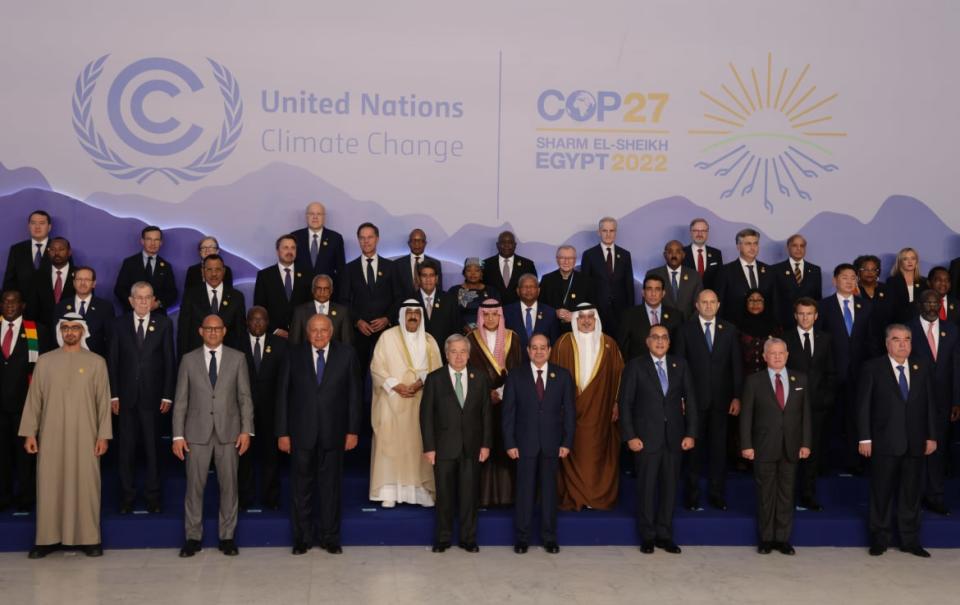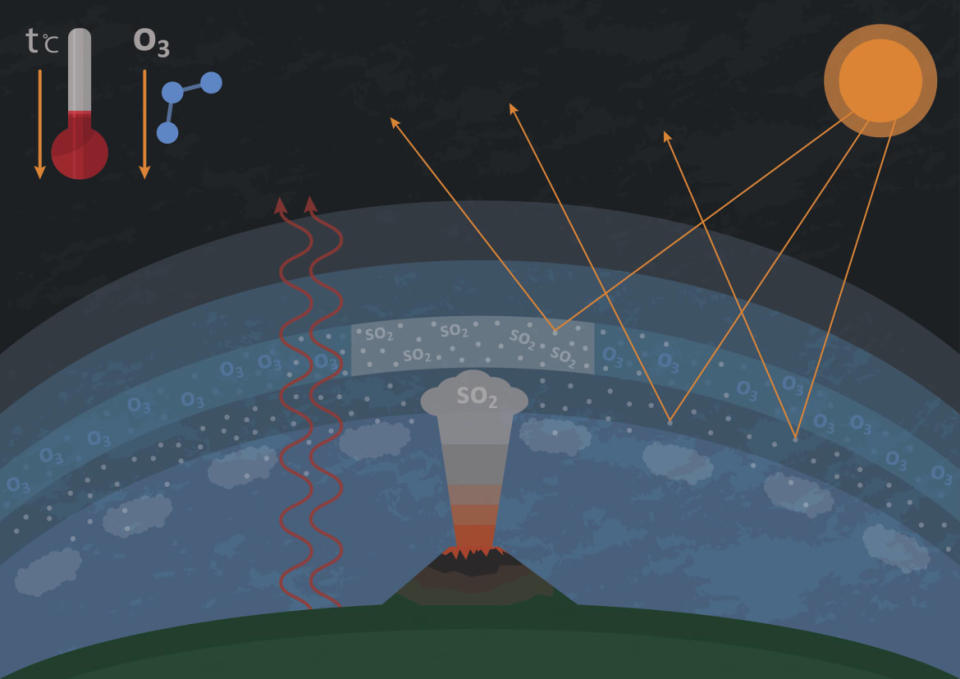The White House Admits It: We Might Need to Block the Sun to Stop Climate Change

We’re entering the final days of COP27, the UN’s annual climate summit, and it’s safe to say that this year’s edition was disappointing—to say the least. It was widely panned by climate experts and activists and drew intense criticism for being sponsored by the likes of Coca-Cola, the world's leading plastic polluter.
Moreover, like so many climate summits in the past, little action has actually taken place in terms of concrete climate action and policy. In fact, the argument could be made that the biggest decisions to fight climate change weren’t decided at COP27, but rather at the G20 summit between the U.S. and China. Similarly, the U.S. government also signaled last month that it’s looking into one of the most controversial and consequential climate change-fighting tactics yet.
On Oct. 13, the White House announced that it was funding a five-year-research plan into one of the most controversial proposals for fighting climate change out there: geoengineering, or the technologies and innovations that can be used to artificially modify the Earth’s climate.
The report will be dedicated specifically to a form of geoengineering known as solar radiation management. This is a technique that essentially involves spraying fine aerosols into the atmosphere to reflect sunlight away from the Earth. The idea is that, once it’s reflected, there’ll be less heat and temperatures will go down.

World leaders gather in Egypt for COP27, an event widely criticized by climate experts and activists for being a hypocritical display of virtue signaling by elites.
The research plan will be modeling how SRM might impact the atmosphere and assess its viability as a potential technique used to “manage near-term climate risk.” Put it another way: We want to know whether or not we should include this in our “break glass in case of climate disaster” box.
While it sounds a bit bonkers, the world has actually seen inadvertent SRM before after large volcanic eruptions throw massive amounts of gas and debris into the atmosphere and block out the sun. The 1816 Tambora Volcano eruption in Indonesia resulted in what became known as “the year without a summer” throughout Europe and North America after temperatures sank by as much as 3 degrees Celsius.
For some context, the 2015 Paris Climate Agreement included a goal to keep temperatures from rising by 2 degrees Celsius (with a stretch goal of 1.5 degrees Celsius that we’ve completely shat the bed on). So a controlled version of SRM is often thought of as a viable method to prevent the worst climate disasters. Even the UN recognized the potential of this technology at COP27—much to the chagrin of many activists who are fervently against geoengineering.
"Geoengineering is a sign of industrial desperation," Panganga Pungowiyi, an organizer at the Indigenous Environmental Network, said during a panel at the climate summit.
Regardless, it’s a radical and potentially life-saving research plan—and it’s one that some of its oldest and ardent supporters believe is a cause for celebration.

Global temperature typically drops after a large volcanic eruption due to debris and gas reflecting sunlight away from the Earth.
“I was delighted to hear that the U.S. government is funding a five-year research plan,” Stephen Salter, a professor emeritus at the University of Edinburgh and marine engineer, told The Daily Beast. “It is an indication that, at last, they are taking the problem seriously.
For decades, Salter has championed geoengineering as a viable tactic in order to deal with the world’s worsening climate issues. He’s even invented several devices and systems that can tackle these problems such as the “Salter sink,” which was created in the wake of Hurricane Katrina in 2007 and that he said could cool ocean temperatures down enough in order to stop powerful storms from forming.
Salter was also one of the first researchers to propose SRM as a means to cool down the Earth. However, all of his proposals and ideas have largely fallen on deaf ears due to what he describes as the “stupidity of decision makers” in government. He has a bit of an ax to grind when it comes to this matter: In 2005, the U.K. government rejected his proposal to use SRM to prevent sea temperature rise.
That’s why the White House’s willingness to invest in solar geoengineering research is such a big deal. The U.S. government is recognizing that we might have to turn to incredibly drastic, experimental measures in order to stop climate disaster: blocking out the sun. If the U.S. does so, many other countries might follow as well.
“I hope that [the five-year-research plan] will encourage people in other countries and that some money will go towards engineering not just governance where most goes now,” Salter added.
But, of course, such a measure doesn’t come without risk. Geoengineering critics warn that it could have unintended consequences that ripple out all over the globe. After all, when you spray aerosols into the atmosphere, they’re going to spread out. Its effects would be felt everywhere no matter where you initially sprayed it. This could lead to a butterfly effect of disastrous events.
For example, temperatures could dip so low that it results in crop loss—which we’ve experienced before in the year without a summer. Changes to the atmosphere could also intensify weather events like storms. Some research suggests that solar geoengineering could even spread diseases.
But Salter believes that the risks are often overstated. He asserts that SRM is also an entirely reversible system that can be stopped with “one mouse click” after which “the effects will be gone at the next rain shower.” SRM would just be a tactic that helps us buy time while we try to address issues like reducing carbon emissions.
Blocking the Sun Is a Risky Gambit for Fighting Climate Change. It May Also Be Our Best Option.
Also, the five-year-research plan from the White House would also be researching the dangers and risks associated with solar geoengineering. When we employ a method like this, it wouldn’t be without extensive modeling. We’d have at least a close approximation of what would occur if it does happen.
Besides, we might run an even greater risk if we do nothing at all.
“It’s like the airbags in your car,” Andrew Dessler, the director for the Texas Center for Climate Studies at Texas A&M University, told The Daily Beast. “You never want to use them, but you’ll be glad you had them when you do.”
Dessler believes that, while we should do all we can now to limit global temperature rise by aggressively reducing carbon emissions, it’s better to have solar geoengineering systems ready just in case we might need it in the future. To do that, then, we need to start researching the approach now—so we know what to expect when we do need to use it.
Meet the People Who Want to Stop the Next Hurricane by Hacking the Ocean
“You can imagine a scenario where it’s 2040. Climate change is out of control. People suddenly realize, holy crap, this is awful,” he said. “You got to do something immediately. In that case, SRM might be your least bad option.
“It’s not the way you want to handle the problem,” he added. “The right way to handle the problem is to start cutting your emissions immediately, so you don’t get yourself into that situation. But I definitely see a pathway in the future where we do need to deploy it.”
As the adage goes, drastic times call for drastic measures. What does it say then that the U.S. government has decided to put some skin in the game and fund research and resources into solar geoengineering?
At the recent U.N. climate summit, Secretary-General Antonio Guterres announced that the world was on the “highway to climate hell.” Not only have we failed to reach the 1.5 degree Celsius threshold outlined by the Paris Climate Agreement, but we’re well on our way to blowing past the 2 degree Celsius goal as well.
That means that we’re increasingly finding ourselves with limited options. With our backs against the wall, an ocean rising to our feet, and the planet burning around us, we might have little choice but to use the airbag—and pray that it saves us all.
Got a tip? Send it to The Daily Beast here
Get the Daily Beast's biggest scoops and scandals delivered right to your inbox. Sign up now.
Stay informed and gain unlimited access to the Daily Beast's unmatched reporting. Subscribe now.

